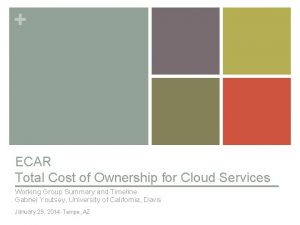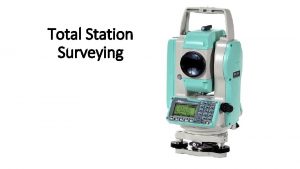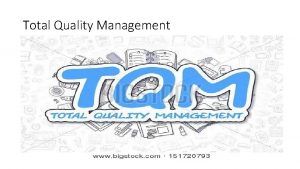Steps for Computing Grades 1 Get the total











- Slides: 11

Steps for Computing Grades 1. Get the total score for each component. Example: Learner’s Raw Score Highest Possible Score Written Work 1 18 20 Written Work 2 22 25 Written Work 3 20 20 Written Work 4 17 20 Written Work 5 23 25 Written Work 6 26 30 Written Work 7 19 20 Total 145 160

Learner’s Raw Score Performance Task 1 12 Performance Task 2 23 Performance Task 3 19 Performance Task 4 15 Performance Task 5 16 Performance Task 6 25 Total 100 Quarterly Assessment Learner’s Raw Score 40 Highest Possible Score 15 15 25 20 20 25 120 Highest Possible Score 50

2. Divide the total raw score by the highest possible score then multiply the quotient by 100%. 145 Percentage Score (PS) = X 100 160 Percentage of Written Work is 90. 63. 100 Percentage Score (PS) = X 100 120 Percentage of Performance Task is 83. 33. 40 Percentage Score (PS) = X 100 50 Percentage of Quarterly Assessment is 80.

3. Convert Percentage Scores to Weighted Scores. Multiply the Percentage Score by the weight of the component. Written Work for Science is 40%. Weighted Score (WS) = = 90. 63 X 0. 40 36. 25 Performance Task for Science is 40%. Weighted Score (WS) = 83. 33 X 0. 40 = 33. 33 Quarterly Assessment for Science is 20%. Weighted Score (WS) = = 80. 00 X 0. 20 16. 00

4. Add the weighted Scores of each component. The result will be the Initial Grade. Component Weighted Score Written Work = 36. 25 Performance Task = 33. 33 Quarterly Assessment= 16. 00 Total 85. 58 - Initial Grade 5. Transmute the Initial Grade using the Transmutation Table. The transmuted Grade is 90. This is reflected in the report card.

Initial Grade Transmutation Table Initial Grade Transmuted Grade 100 98. 40 - 99. 99 99 66. 40 – 67. 99 79 96. 80 - 98. 39 98 64. 80 – 66. 39 78 95. 20 - 96. 79 97 63. 20 – 64. 79 77 93. 60 - 95. 19 96 61. 60 – 63. 19 76 92. 00 - 93. 59 95 60. 00 – 61. 59 75 90. 40 – 91. 99 94 56. 00 – 59. 99 74 88. 80 – 90. 39 93 52. 00 – 55. 99 73 87. 20 – 88. 79 92 48. 00 – 51. 99 72 85. 60 – 87. 19 91 44. 00 – 47. 99 71 84. 00 – 85. 59 90 40. 00 – 43. 99 70 82. 40 – 83. 99 89 36. 00 – 39. 99 69 80. 80 – 82. 39 88 32. 00 – 35. 99 68 79. 20 – 80. 79 87 28. 00 – 31. 99 67 77. 60 – 79. 19 86 24. 00 – 27. 99 66 76. 00 – 77. 59 85 20. 00 – 23. 99 65 74. 40 – 75. 99 84 16. 00 – 19. 99 64 72. 80 – 74. 39 83 12. 00 – 15. 99 63 71. 20 – 72. 79 82 8. 00 – 11. 99 62 69. 60 – 71. 19 81 4. 00 – 7. 99 61

List of Summative Assessment Tools Learning Area SCIENCE Written Work (WW) A. B. 1. 2. 3. Unit/Chapter Tests Written output Concept maps Data recording and analyses Laboratory reports and documentations 4. Reaction/ reflection papers 5. Surveys Performance Tasks (PT) A. Products 1. Investigatory Projects 2. Models and Diagrams construction 3. Prototype building 4. Research papers B. Performance-based tasks 1. Debates 2. Designing and implementation of action plans 3. Designing various models 4. Doing scientific investigations 5. Issue-awareness campaigns 6. Laboratory activity 7. Multimedia presentations 8. Simulation 9. Skills demonstration 10. Verification experiments

Descriptors, Grading Scale, and Remarks DESCRIPTOR GRADING SCALE REMARKS Outstanding 90 – 100 Passed Very Satisfactory 85 – 89 Passed Satisfactory 80 – 84 Passed Fairly Satisfactory 75 – 79 Passed Did Not Meet Expectations Below 75 Failed



Report on Learner’s Observed Values • Maka-Diyos – Expresses one’s spiritual beliefs while respecting the spiritual beliefs of others. – Shows adherence to ethical principles by upholding truth. • Makatao • Makakalikasan • Makabansa • • AO SO RO NO – Non Numerical Rating
 Get on / get off transport
Get on / get off transport What are the steps in computing grades
What are the steps in computing grades Personification in one thing by one direction
Personification in one thing by one direction Conventional computing and intelligent computing
Conventional computing and intelligent computing Get up get moving quiz
Get up get moving quiz Get up get moving quiz
Get up get moving quiz Get up get moving
Get up get moving Pseudocode sequence
Pseudocode sequence Get focused get results
Get focused get results Get up get moving quiz
Get up get moving quiz Total cost of ownership in cloud computing
Total cost of ownership in cloud computing 4-1 computing your total checking account deposit answers
4-1 computing your total checking account deposit answers



















